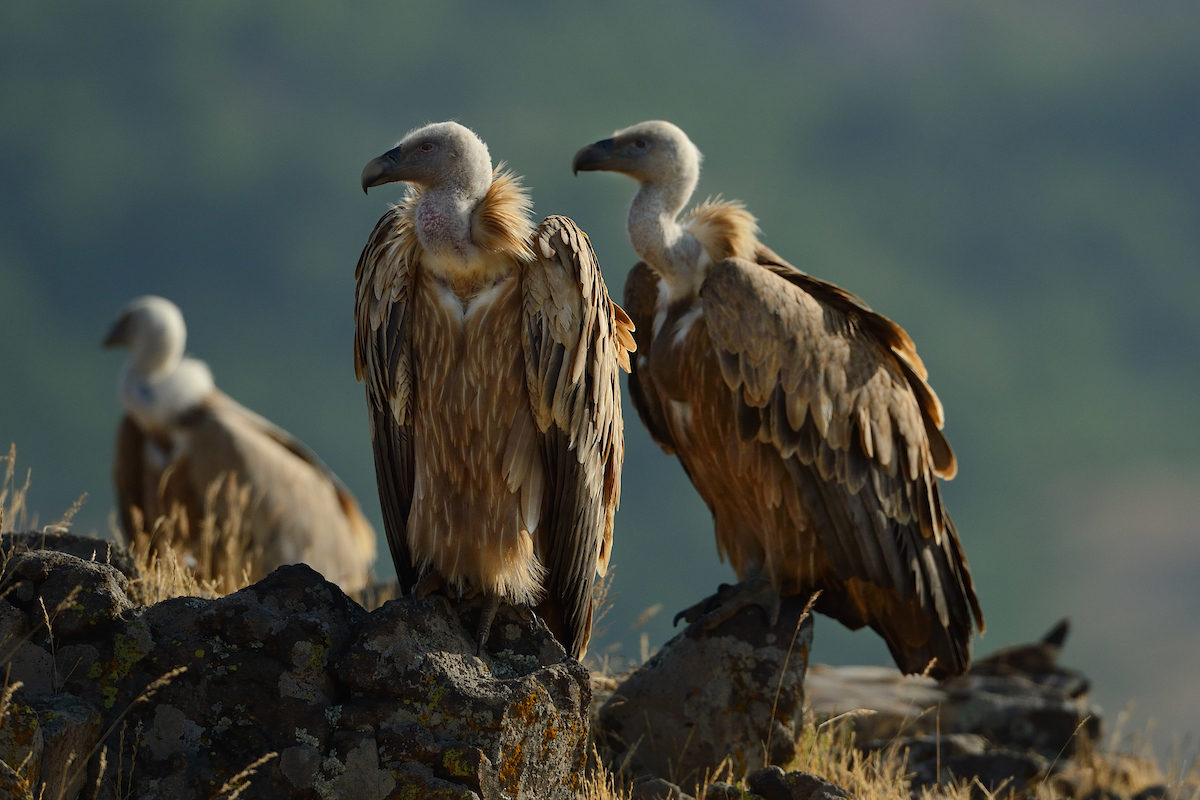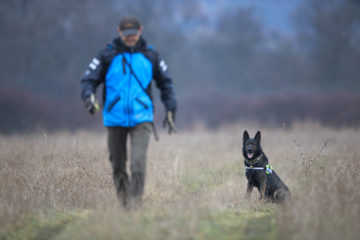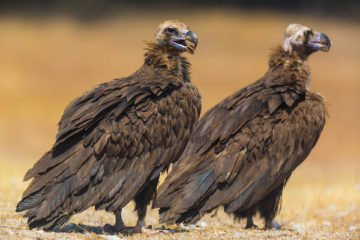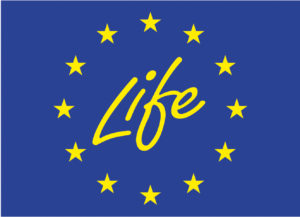The number of griffon vulture pairs nesting in the Rhodope Mountains rewilding area in Bulgaria this year has (so far) reached 99. Despite this record-breaking figure, an unconfirmed poisoning incident highlights the threats that these birds still face.

Nesting success
Rewilding Europe is delighted to announce that the number of griffon vulture pairs nesting in the Rhodope Mountains rewilding area in southeast Bulgaria has grown since last year.
Recent monitoring in the valley of the Arda River by the local rewilding team and local partner the Bulgarian Society for the Protection of Birds (BSPB) revealed a total of 99 pairs of the locally endangered species – three more pairs than in 2019. This is testament to the hard work and dedication of the team, and the ongoing activities carried out under the framework of the LIFE Vultures project.
With 99 nests occupied, the team counted 83 vulture pairs already incubating. The remaining pairs were still building and repairing their nests. More monitoring will be carried out in May to record the number of juveniles born this year, while there is a possibility that more pairs will become established later in the breeding season.
Caring parents
Griffon vultures, like certain other bird species, remain with their partner for life, and are known to be caring parents. Typically a solitary egg is laid between January and April, which is then incubated for around 55 days.
Chicks are raised by their parents for nearly four months until they are ready to fly, taking to the air for the first time around 140 days after birth. By the middle of summer the young vultures typically weigh about seven to eight kilogrammes; while they are not quite as heavy as their parents, they are the same size, and have all their feathers (although the colouring in juvenile vultures is different to adult birds).
Existential threats

The griffon vulture was once widely distributed across Bulgaria. By the early 1970s, however – largely due to the decreasing availability of food, habitat loss, persecution and poisoning – it was thought to have disappeared completely.
In 1986, a griffon vulture colony was discovered near the small town of Madjarovo in the Eastern Rhodope Mountains, consisting of about 20 birds and three nesting pairs. Ongoing conservation efforts, many carried out by the BSPB, have seen the birds recover to their current level.
An unconfirmed poisoning incident in late February, which saw one adult vulture equipped with a GPS transmitter found dead by the local anti-poison dog unit, highlights the threats that griffon vultures in the Rhodope Mountains still face.
Such units patrol the Rhodope Mountains rewilding area on both the Bulgarian and Greek sides of the border. They detect and remove illegal poison baits and carcasses, which are frequently put out by local people with the aim of killing foxes, jackals, wolves and other animals that are perceived as a threat to livestock. These can have a disastrous effect on vultures, which forage widely for such carrion.
Supporting comeback
Starting in 2016, the five-year LIFE Vultures project was developed by Rewilding Europe, in collaboration with the Rewilding Rhodopes Foundation, the Bulgarian Society for the Protection of Birds (BSPB), and a range of other partners.
Focusing on the Rhodope Mountains rewilding area in Bulgaria, as well as a section of the Rhodope Mountains in northern Greece, the aim of the project is to support the recovery and further expansion of the griffon and cinereous (black) vulture populations in this part of the Balkans, mainly by improving natural prey availability, and by reducing mortality through factors such as poaching, poisoning and collisons with power lines.
Recolonisation hope

Unlike the griffon vulture, the cinereous vulture no longer breeds in the Bulgarian part of the Rhodope Mountains. However, a breeding colony exists in Dadia National Park, just across the border in the Greek part.
Efforts to encourage these birds to nest and breed in the Bulgarian part, which include artificial feeding stations and artificial nests, have so far proved unsuccessful, although birds from Dadia regularly visit. During this year’s griffon vulture monitoring the mating behaviour of two pairs of cinereous vultures from Dadia was observed, giving the rewilding team cause to hope that the species may soon naturally return as a breeding species.
A new grant from Cosmetics retailer Lush will see cinereous vultures reintroduced into the Bulgarian part of the Rhodope Mountains rewilding area later this year, by the Rewilding Rhodopes team, in partnership with the BSPB.
Want to know more?

